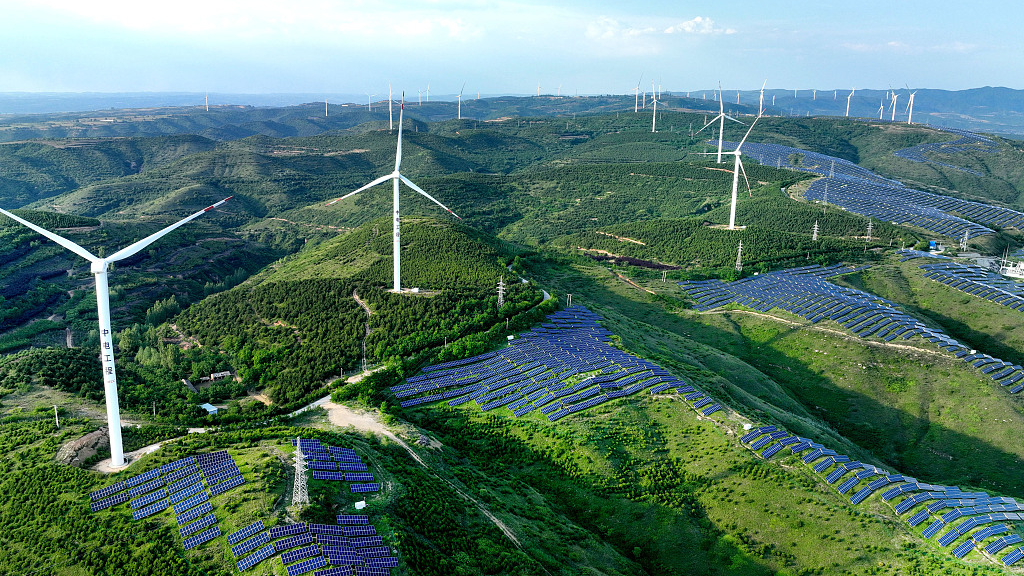
Wind and photovoltaic power plants in Huanglong County, Yan'an City, northwest China's Shaanxi Province, June 7, 2023. /CFP
Wind and photovoltaic power plants in Huanglong County, Yan'an City, northwest China's Shaanxi Province, June 7, 2023. /CFP
The installed capacity of non-fossil fuel energy power generation in China has exceeded 50 percent, an official at the country's National Development and Reform Commission (NDRC) said on Monday.
Non-fossil fuel energy power, such as wind, solar and hydro power, accounts for 50.9 percent of China's total installed capacity, exceeding that of fossil energy, according to Yang Yinkai, NDRC's deputy director, at a conference held in Shanghai. The achievement comes in advance of the country's goal to have non-fossil capacity surpass that of fossil fuel by 2025.
China aims to have its carbon dioxide emission peak before 2030 and achieve carbon neutrality in 2060.
Though the country's energy consumption mix remains weighted toward fossil fuels, with coal accounting for 56.2 percent of total consumption last year, progress has been made in promoting green and low-carbon energy.
To accelerate energy transformation, the country has built large-scale photovoltaic and wind power bases in deserts in recent years, said Yang.
The country has also made efforts in coal-fired power units' technical transformation for energy conservation, carbon reduction, replacement of low efficiency boilers and improving load regulation capacity, Yang added.
A structured matrix of large hydropower stations in the basins of major rivers have also been built, especially in the southwest.
According to a white paper published in January, the proportion of clean energy consumption in the country has increased from 14.5 percent in 2012 to 25.5 percent at the end of 2021, and the proportion of coal decreased from 68.5 percent to 56 percent over the same period.